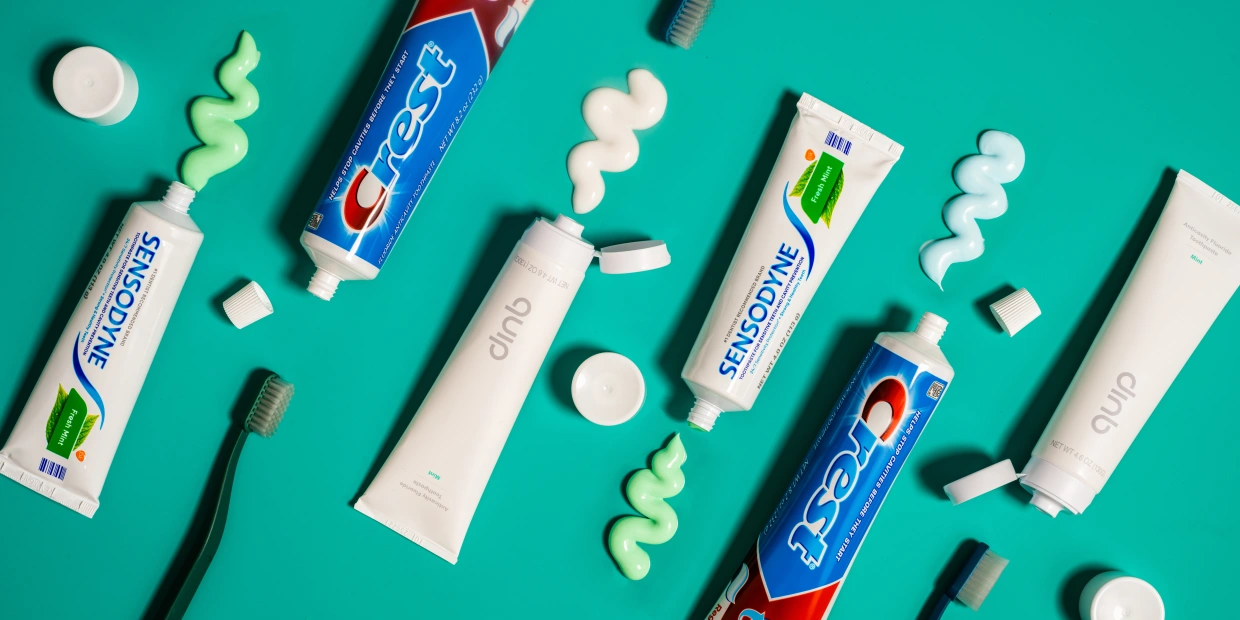Toothpaste effectiveness for stronger Teeth
|
Getting your Trinity Audio player ready...
|
Maintaining strong and healthy teeth is a crucial aspect of overall oral hygiene. While toothpaste is a common part of our daily dental routine, using it effectively can make a significant difference in the strength and well-being of your teeth. Let’s delve into the secrets of how to use toothpaste effectively for stronger teeth.
Choose the right toothpaste
Fluoride Content
Select a toothpaste that contains fluoride. Fluoride helps strengthen tooth enamel and protects against tooth decay.
Consider Specialized Formulas
If you have specific dental concerns, such as sensitivity or gum issues, opt for toothpaste formulated to address these issues.
Use the Right Amount
Pea-Sized Portion
A pea-sized amount of toothpaste is sufficient for effective cleaning. Using more doesn’t necessarily lead to better results and may increase the risk of ingesting unnecessary chemicals.
Proper Brushing Technique
Brush Twice Daily: Brush your teeth at least twice a day, ideally in the morning and before bedtime.
Circular Motions: Use gentle, circular motions to clean the front, back, and chewing surfaces of each tooth.
Angle the Bristles: Angle the bristles at a 45-degree angle towards the gumline. This helps clean the area where the teeth meet the gums.
Brush for the Right Duration
Two Minutes: Aim to brush your teeth for a full two minutes. Set a timer or use a toothbrush with a built-in timer to ensure you devote adequate time to each brushing session.

Pro Tip:
Optimize Your Brushing Technique: While brushing, focus on small, gentle circles rather than vigorous scrubbing. Applying excessive pressure can damage tooth enamel and gums. Additionally, make sure to reach all surfaces of your teeth, including the often-neglected back surfaces and the gumline. A thorough yet gentle brushing technique ensures effective cleaning without causing unnecessary abrasion.
Don’t Forget Your Tongue
Tongue Cleaning: After brushing your teeth, gently clean your tongue with your toothbrush or a tongue scraper. This helps remove bacteria that contribute to bad breath.
Rinse and Spit
Don’t Swallow: Avoid swallowing toothpaste. Spit out the excess foam and rinse your mouth thoroughly with water.
Avoid Mouthwash Immediately: If you use mouthwash, wait at least 30 minutes after brushing before using it. Some mouthwashes contain ingredients that can deactivate the benefits of fluoride.
Regular Dental Check-ups
Professional Cleanings: Schedule regular dental check-ups and professional cleanings. A dentist can identify potential issues and provide advice on maintaining strong teeth.
Consider Additional Dental Products
Flossing: Incorporate daily flossing into your routine to clean between teeth and remove plaque.
Mouthwash: Choose an antibacterial mouthwash to further reduce bacteria in your mouth.
Mind Your Diet
Limit Sugary Foods: Reduce the consumption of sugary foods and beverages, as they contribute to tooth decay.
Calcium-Rich Diet: Include calcium-rich foods in your diet, as calcium is essential for strong teeth.
Replace Your Toothbrush
Every Three Months: Replace your toothbrush or toothbrush head every three months or sooner if the bristles are frayed.
Conclusion: A Brighter, Stronger Smile Awaits
By incorporating these effective toothpaste usage tips into your daily routine, you’re taking proactive steps toward achieving stronger and healthier teeth. Consistency, proper technique, and regular dental check-ups are key components of maintaining optimal oral health. Embrace these practices, and a brighter, stronger smile awaits you on your dental journey.
FAQS
Why is toothpaste important for oral health?
Toothpaste is crucial for maintaining oral health as it helps to remove plaque, fight bacteria, and strengthen tooth enamel. It often contains fluoride, which plays a key role in preventing tooth decay.
How much toothpaste should I use during each brushing session?
A pea-sized amount of toothpaste is sufficient for effective cleaning. Using more doesn’t necessarily enhance results and may increase the risk of ingesting unnecessary chemicals.
What should I look for when choosing toothpaste?
Look for toothpaste that contains fluoride for enamel protection. Consider specialized formulas if you have specific dental concerns, such as sensitivity or gum issues.
What is the proper brushing technique?
Brush at least twice a day using gentle, circular motions. Angle the bristles at 45 degrees towards the gumline, and ensure you clean the front, back, and chewing surfaces of each tooth.
How long should I brush my teeth?
Aim to brush for a full two minutes. Set a timer or use a toothbrush with a built-in timer to ensure you devote adequate time to each brushing session.
